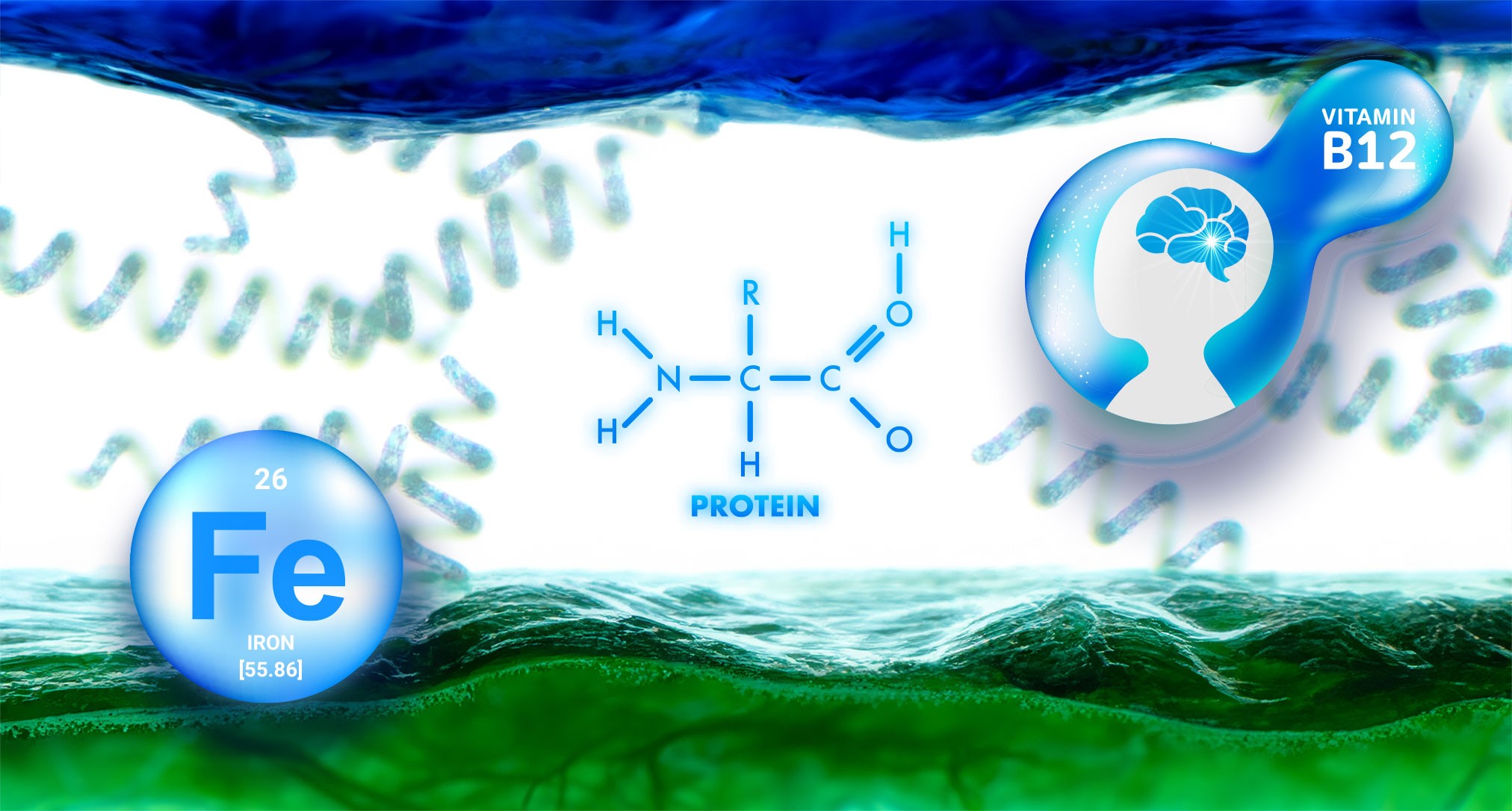
Spirulina, a microalga with multiple virtues, is becoming increasingly popular due to its health benefits. But how is this alga cultivated? It is through the different stages of spirulina culture and the techniques used that it benefits from optimal quality, essential to enjoying all its benefits.
What is Spirulina?
Spirulina is a microalga classified among the "superfoods" due to its rich nutritional value. Rich in phycocyanin, this cyanobacterium is known to be an exceptionally rich source of proteins, iron, vitamin B12, carotenoids, and antioxidants. It is now cultivated all over the world and consumed for its health benefits, especially for its ability to boost the immune system, improve endurance, and reduce fatigue, which primarily comes from the phycocyanin it contains and which we make available after extraction in the dietary supplement 10K.
An Environment Suitable for Spirulina Growth
Requiring a warm and sunny climate for cultivation as well as water rich in nutrients (phosphate, nitrate, carbonate, etc.), spirulina naturally develops in the alkaline lakes of tropical and subtropical regions.
Although some operations are located near natural lakes favorable to spirulina growth, the majority of aquaculture farms reproduce these conditions by setting up artificial ponds. Shallow (20 to 30 cm) to facilitate light penetration and ease algae harvesting, these must have optimal sun exposure and offer soft water at about 25°C with a basic pH between 9 and 11, and a concentration in minerals necessary for the culture.
Stages of Spirulina Production
Several steps are essential to cultivate spirulina and benefit from the best possible quality.
- Inoculation of the Pond
The first step in cultivating spirulina in a suitable environment is essential. One must take a small amount of the mother spirulina and introduce it into the pond containing the culture medium.
- Growth of Spirulina
Thanks to the nutrients present in the water and sunlight, spirulina gradually develops. The mix must then be stirred regularly to prevent spirulina from sinking to the bottom of the pond and to ensure optimal oxygen supply. In good conditions, it will multiply until the concentration of spirulina in the pond increases.
- Harvest
Once the spirulina concentration has reached a sufficient level (about 1g/L), the producer can proceed with its harvest by filtering the water through suitable cloths or sieves.
- Drying
After harvest, spirulina is generally dried to allow its packaging. There are several drying methods, including air drying, greenhouse drying, or low temperature drying (not exceeding 40°C). This is where PHYCOMANIA's spirulina differs from other market spirulinas. PHYCOMANIA extracts the phycocyanin from spirulina before drying to obtain fresh phycocyanin still linked to water. Find here all the information on PHYCOMANIA's phycocyanin extraction.
- Packaging
Once dried, spirulina is ground and transformed into powder or granules. It can then be packaged and marketed in various forms (capsules, tablets, flakes, liquid forms, etc.).
An Environmentally Friendly Culture Without Pesticides
One of the many advantages of spirulina culture is its low environmental impact. Indeed, this microalgae produces a large amount of oxygen through photosynthesis, thus contributing to air purification. Requiring little water for its growth, spirulina is a sustainable and eco-friendly resource.
To ensure a healthy and quality product, most producers choose to cultivate spirulina without using pesticides or chemical fertilizers. Thus, biological or ecological production techniques that promote the use of natural means to preserve the nutritional qualities of the algae are mostly used to produce spirulina.
To complement this environmentally friendly culture, producers like PHYCOMANIA commit to reducing their environmental impact by promoting the recycling of their containers.
Local Production for Better Quality Control
Although spirulina is mainly produced in countries such as China, India, or the United States, there is a favorable evolution towards the creation of local farms. Indeed, developing operations closer to consumers not only reduces the ecological footprint associated with transport, but also ensures better quality control and optimal traceability.

 The guardians of vitality : The Ultimate Synergy
The guardians of vitality : The Ultimate Synergy
 USER GUIDE FOR CHLORO B 5K: CHLOROPHYLL THE GREEN POWER OF SPIRULINA
USER GUIDE FOR CHLORO B 5K: CHLOROPHYLL THE GREEN POWER OF SPIRULINA
 How does the color of the product not determine the Phycocyanin concentration?
How does the color of the product not determine the Phycocyanin concentration?
 The benefits of phycocyanin
The benefits of phycocyanin
 Best Dietary Supplements: What are the Essential Dietary Supplements
Best Dietary Supplements: What are the Essential Dietary Supplements
 Spirulina Culture: How is Spirulina Cultivated?
Spirulina Culture: How is Spirulina Cultivated?
 The essential differences between spirulina and phycocyanin
The essential differences between spirulina and phycocyanin
 User Guide 10K Phycocyanin Dietary Supplement: The Bioactive Heart of Spirulina
User Guide 10K Phycocyanin Dietary Supplement: The Bioactive Heart of Spirulina
 Phycocyanin: A natural weapon against free radicals
Phycocyanin: A natural weapon against free radicals
 Phycocyanin and blood sugar: can phycocyanin help promote glycemic balance?
Phycocyanin and blood sugar: can phycocyanin help promote glycemic balance?
 The Benefits of Phycocyanin for Athletes to Enhance Performance
The Benefits of Phycocyanin for Athletes to Enhance Performance
 Boosting natural defenses: How does phycocyanin enhance your immune system?
Boosting natural defenses: How does phycocyanin enhance your immune system?
 Phycocyanin extraction: are all extraction methods as good as each other?
Phycocyanin extraction: are all extraction methods as good as each other?
 Understanding cyanobacteria: these multifaceted micro-organisms
Understanding cyanobacteria: these multifaceted micro-organisms
 Which is best? Phycocyanin in liquid, powder or tablet form?
Which is best? Phycocyanin in liquid, powder or tablet form?
 What is spirulina and what benefits does it have?
What is spirulina and what benefits does it have?
 What is the link between phycocyanin, physical recovery and sleep?
What is the link between phycocyanin, physical recovery and sleep?
 Better World Fund Cannes Festival 2022
Better World Fund Cannes Festival 2022